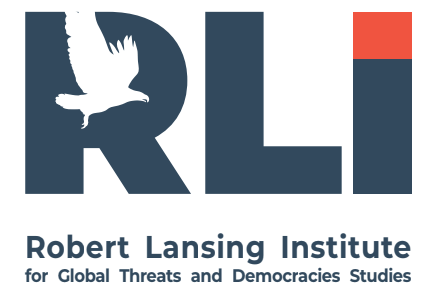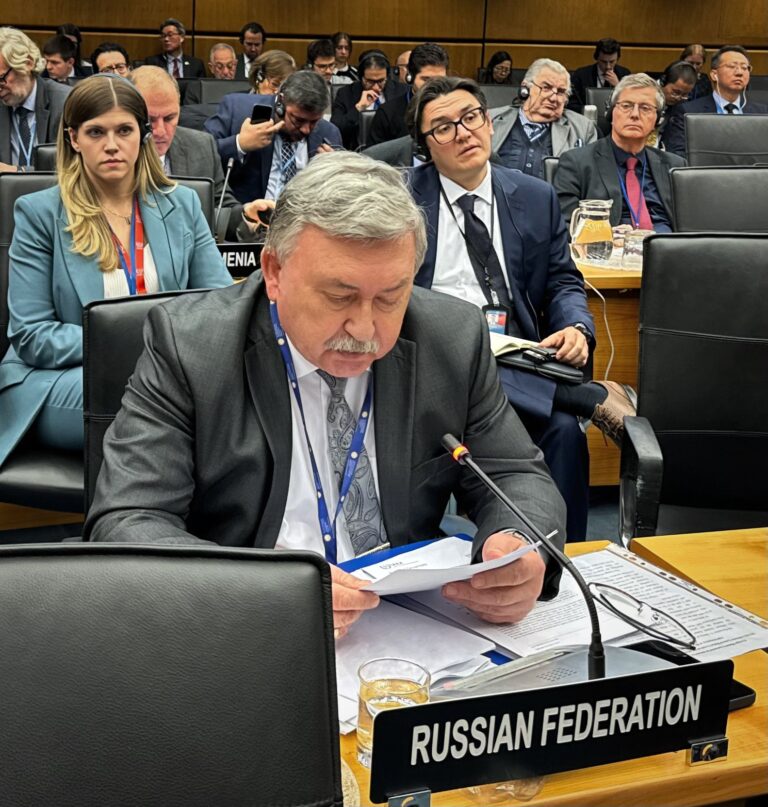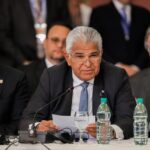While Russian nuclear power projects offer benefits such as financing and rapid deployment, they come with significant risks that must be carefully evaluated. Countries engaging with Russian nuclear energy providers should prioritize transparency, safety, and diversification to safeguard their energy and geopolitical interests.
Russia uses nuclear blackmail to increase the escalation since its rotating presidency in the UN Security Council in July 2024. If in 2014 the Kremlin talked about the possibility of a nuclear war in case of pressure on Moscow, then in 2024 some representatives of the Russian authorities, such as, the Deputy Chairman of the Security Council Dmitriy Medvedev, openly threatened to attack the territory of Poland. On Russian television channels, propagandists are calling for strikes on the United Kingdom, with threats to erase it from the world map.
Russia uses energy as a lever of influence and blackmail, impacting international organizations such as the International Atomic Energy Agency (IAEA) through infiltrated intelligence representatives in its leadership. For example, Deputy Director General Mikhail Chudakov allegedly participated in Russian psyops accusing Ukraine of creating a “dirty bomb,” a claim used by the Kremlin to justify its invasion of Ukraine in 2022.Over the past three years, Russia has been attempting to monopolize the nuclear energy sector by taking control of uranium deposits and restricting competitors’ access to these resources, primarily targeting France and the United States.
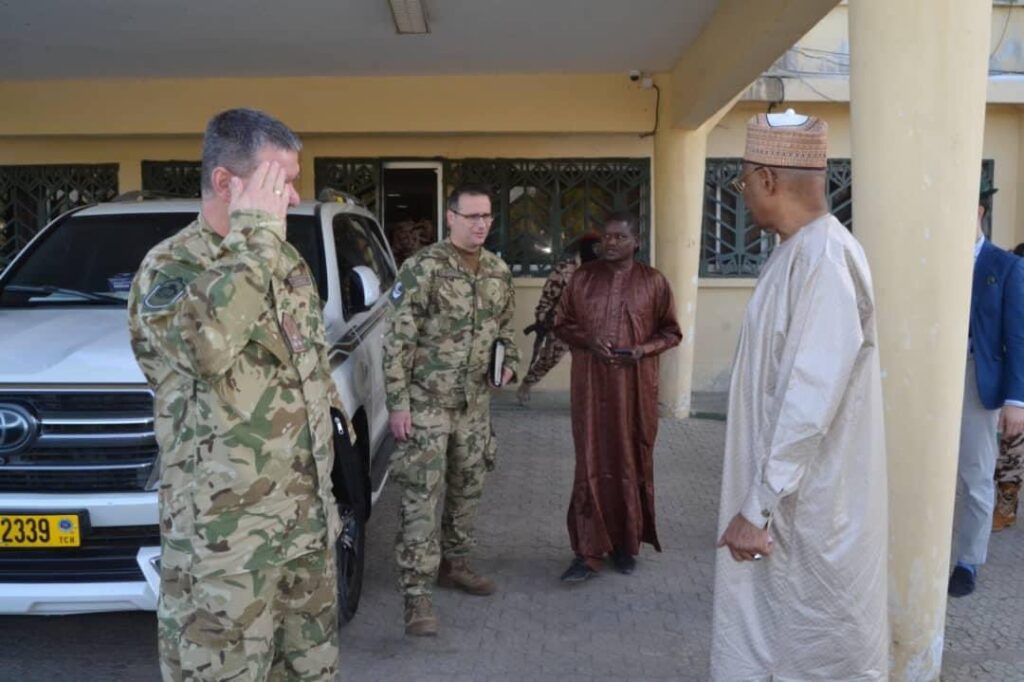
More on this story: Hungary is setting closer cooperation with Russia in Chad
Dominance in the Nuclear Energy Market
The Russian nuclear energy sector continues to hold a leading position in global markets. The state corporation “Rosatom” controls 40% of the global enriched uranium market and 16% of the global market for finished nuclear fuel (fuel assemblies). Most uranium enrichment plants worldwide are currently located in Russia. The expansion of Russia’s nuclear energy market and its use for geopolitical purposes and hybrid subversive operations increase the risks of incidents at nuclear facilities globally.
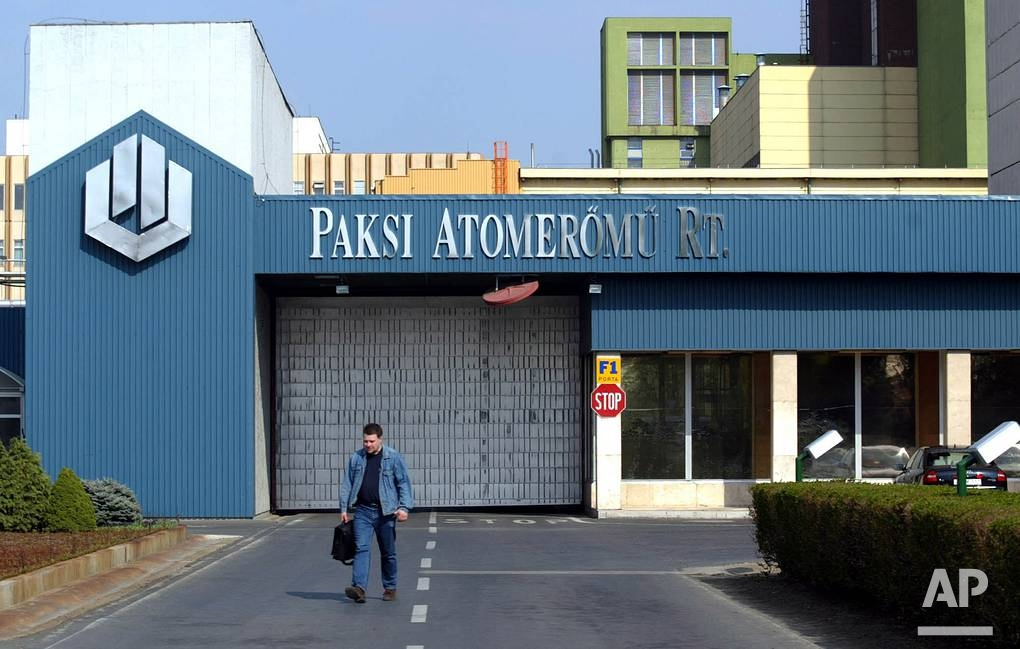
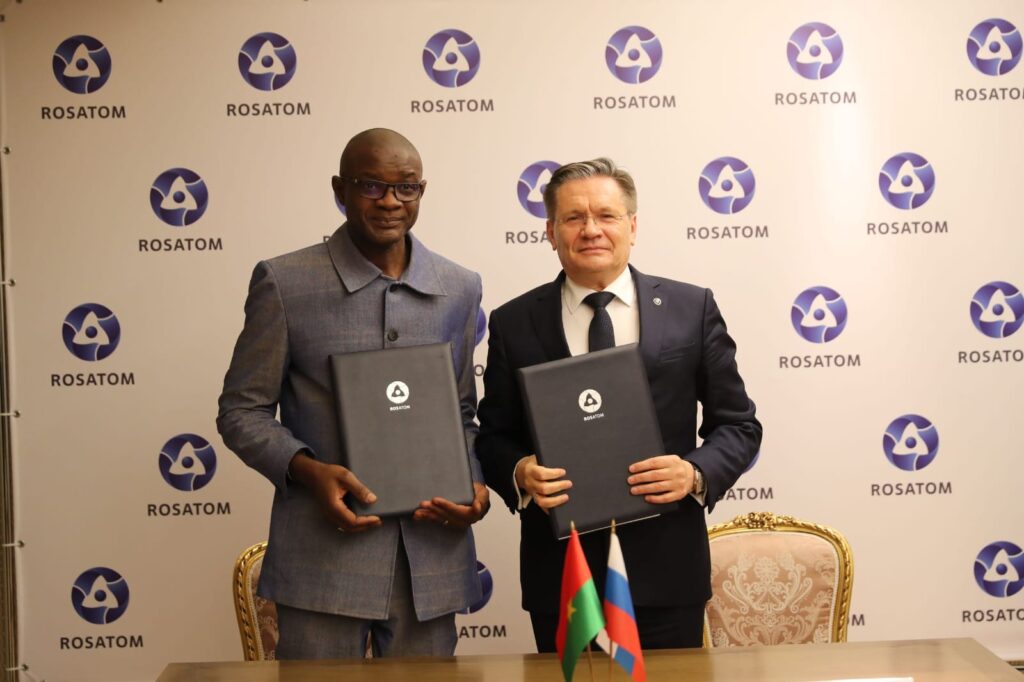
Rosatom’s Global Projects
Rosatom holds the top position globally for the number of nuclear power plant construction projects abroad, with contracts signed for the construction of 33 energy units. According to Rosatom, the total value of its foreign order portfolio is approximately $200 billion.
Challenges from Western Sanctions
However, Western sanctions imposed on Russia’s economy are also affecting the nuclear energy sector. Rosatom is facing significant challenges in building new nuclear power plants, such as the Kursk-2 and Leningrad-3 plants in Russia. For instance, during the construction of a plant in the Kursk region, Atomstroyexport failed to deliver an automated radiation control system, delaying its installation indefinitely. Delays have also occurred in the installation of emergency reactor cooling systems due to problems with the supply of remote-controlled valves. Additionally, the company is encountering difficulties with international financial transactions. It can be assumed that similar issues are arising in Russia’s construction of nuclear power plants and new energy units abroad. Rosatom’s activities not only bolster Russia’s defense industry but also serve as instruments of geopolitical influence, which could inherently involve intelligence dimensions.Currently, Russia is working on eight nuclear power plant (NPP) construction projects abroad:
Bangladesh (Rooppur NPP)
– Construction of the first unit began on November 30, 2017. As of early 2025, construction is fully completed, with initial tests expected soon. The plant, equipped with two VVER-1200 reactors, is set to begin operation in the coming months. Russia provided Bangladesh with a $11.38 billion loan to finance the main construction phase.
Hungary (Paks-2 NPP)
– The Paks NPP, built between 1983–1987 under a Soviet project, has four VVER reactors. In 2005–2009, “Atomstroyexport” extended their service life until 2032–2037 and increased capacity from 1,760 MW to 2,000 MW, generating about 50% of Hungary’s electricity.
– In 2014, Russia and Hungary agreed on the construction of the 5th and 6th units (Paks-2 project) by Rosatom. Despite sanctions on Russia, Hungary continues with the project. Groundwork began in 2022, with completion expected by 2030.
Egypt (El Dabaa NPP)
– In 2015, Russia and Egypt signed an agreement for Rosatom to build Egypt’s first NPP, consisting of four VVER-1200 reactors. The $30 billion project is mostly funded by a $25 billion Russian loan. Construction began on July 20, 2022, with the first unit set to launch in 2026 and all four units by 2029.
India (Kudankulam NPP)
– Russia and India agreed in 1998 to build the Kudankulam NPP with two VVER-1000 reactors, operational since 2016–2017. In 2014, they expanded the agreement to include additional units.
– Construction of the 3rd unit began in 2017, with commissioning planned for 2025. Units 5 and 6 construction started in 2021, targeting operation in 2026–2027. The project faces technical challenges and public protests over safety and environmental risks.
Iran (Bushehr NPP)
– Russia resumed work on the Bushehr NPP in 1992, originally started by a German consortium in 1975 and halted after the 1979 Islamic Revolution. The first unit was connected to the grid in 2011 and handed over to Iran in 2013.
– Construction of the second phase began in 2017, with the 2nd and 3rd units planned for operation in 2025 and 2027, respectively.
China (Tianwan NPP)
– Four units equipped with VVER-1000/428 reactors were completed in 2007. The 3rd and 4th units began operations in 2017 and 2018.
– In 2018, Russia and China signed agreements for the 7th and 8th units with VVER-1200 reactors (Generation 3+), expected to launch in 2028.
China (Xudapu NPP)
– In 2018, Russia and China agreed to build the 3rd and 4th units at the Xudapu NPP, featuring VVER-1200 reactors. These are set to begin operation in 2027 and 2028, respectively.
Turkey (Akkuyu NPP)
– In 2010, Russia and Turkey signed an agreement for the construction of Turkey’s first NPP, featuring four VVER-1200 reactors. The project follows a Build-Own-Operate model, with Rosatom owning the plant and its electricity output.
– The first concrete was poured in 2018, and fuel loading for the 1st unit took place in April 2023. The first unit is expected to start in early 2025, with others by 2026. The total project cost is estimated at $22 billion.
– In February 2024, a political decision was made for Rosatom to build a second NPP in Sinop, Turkey. The Akkuyu project has faced delays, management disputes, and financial sustainability concerns.
Russia’s extensive involvement in these projects underscores its strategy to retain a leading role in the global nuclear energy market, even in the face of Western sanctions and logistical hurdles. Additionally, Rosatom is negotiating preliminary agreements to construct nuclear power units in countries such as Brazil, Kyrgyzstan, Myanmar, Nigeria, Saudi Arabia, Uzbekistan, Sri Lanka, Zimbabwe, Mali, Burkina Faso, and Ghana.
Additional Rosatom Projects and Challenges
Kazakhstan:
- Rosatom is currently competing in a tender to construct a nuclear power plant in Kazakhstan.
Finland (Hanhikivi NPP):
- In 2016, Rosatom began preparatory work for the Hanhikivi NPP project with a VVER-1200 reactor. However, in 2022, Finland unilaterally terminated the construction contract due to geopolitical tensions and security concerns following Russia’s invasion of Ukraine.
Nuclear Technology Transfers:
- There are indications of potential transfers of nuclear technology from Russia to Iran and North Korea, raising significant proliferation concerns.
Belarus (Ostrovets NPP):
- The Ostrovets NPP, equipped with two VVER-1200 reactors, was completed in 2023. However, operational issues have become increasingly frequent, tarnishing Rosatom’s reputation due to persistent reliability and safety concerns.
Summary
Rosatom’s activities underscore its ambition to expand its global influence in nuclear energy. However, its reputation is increasingly marred by project cancellations, operational challenges, and suspicions of nuclear technology transfers to sanctioned states. These issues, combined with Western sanctions, highlight the growing difficulties for Russia’s nuclear energy sector in maintaining its dominant global position.
Rosatom is also participating in a tender for the construction of a nuclear power plant in Kazakhstan. In Finland, Rosatom began preparatory work in 2016 on the Hanhikivi NPP project, featuring a VVER-1200 reactor. However, in 2022, the contract for its construction was unilaterally terminated by the Finnish side.
At the same time, there are indications of nuclear technology transfers to Iran and North Korea.
Russia’s reputation has suffered due to the unsatisfactory performance of the Belarusian NPP in Ostrovets, equipped with two VVER-1200 reactors, which was completed in 2023. Operational issues with the plant have been occurring with increasing regularity.
Using Russian nuclear power projects entails several risks, which can be broadly categorized into geopolitical, economic, safety, and environmental concerns:
1. Geopolitical Risks
- Dependence on Russia:
- Countries adopting Russian nuclear technology may become reliant on Russian fuel, spare parts, and technical expertise, creating long-term dependence.
- This dependence could be exploited politically, as seen in Russia’s use of energy supplies as leverage in other contexts (e.g., natural gas in Europe).
- Sanctions and International Relations:
- Collaborating with Russian state-owned enterprises like Rosatom may expose countries to secondary sanctions from Western nations, especially amid ongoing geopolitical tensions.
- Strategic Infrastructure Control:
- Russian involvement in critical energy infrastructure raises concerns about potential influence over national energy policies and security.
2. Economic Risks
- High Costs and Debt Traps:
- Russian nuclear projects often involve financing deals tied to construction, with loans from Russian banks or state agencies. These can create debt burdens for smaller or developing economies.
- Cost overruns and delays are common in large-scale nuclear projects, potentially straining national budgets.
- Limited Local Development:
- Russian projects may prioritize Russian contractors and suppliers, limiting the economic benefits for the host country.
4. Operational Issues
- Fuel Supply Monopoly:
- Rosatom often supplies nuclear fuel for its reactors, creating a monopoly. Switching to alternative suppliers can be technically and financially challenging due to reactor-specific fuel requirements.
- Waste Management:
- Many Russian NPP projects do not provide comprehensive solutions for nuclear waste management, leaving the host countries responsible for long-term storage and disposal.
3. Safety and Security Risks
- Safety Standards:
- Concerns persist about whether Russian-built reactors adhere to the highest international safety standards.
- Older designs, especially in projects for developing countries, may not include the latest safety features.
- Nuclear Material Security:
- Ensuring the secure handling and disposal of nuclear materials is critical. Poor management could lead to risks of proliferation or accidents.
- Operational Transparency:
- Russian projects may lack transparency in operations and compliance with international safety regulations, increasing the potential for oversight failures.
4. Environmental Risks
- Waste Management:
- Spent nuclear fuel and radioactive waste require long-term management, and Russian projects often do not offer comprehensive waste solutions.
- Host countries may face significant costs and challenges in managing waste independently.
- Accident Potential:
- Although rare, nuclear accidents have catastrophic consequences. The risks of operational failures or design flaws cannot be entirely ruled out.
5. Examples of Concerns
- Case Studies:
- Turkey’s Akkuyu Nuclear Plant: Financed and built by Rosatom, this project has raised concerns about Turkish reliance on Russia for its energy future.
- Hungary’s Paks II Expansion: This project has faced criticism over lack of transparency, environmental concerns, and geopolitical implications within the EU.
6. Mitigation Measures
- Diversification:
- Countries can mitigate risks by diversifying energy suppliers and investing in alternative technologies.
- International Oversight:
- Collaboration with international organizations like the IAEA ensures compliance with global safety and security standards.
- Domestic Capacity Building:
- Host countries should invest in local expertise and regulatory frameworks to manage and oversee nuclear projects independently.
While Russian nuclear power projects offer benefits such as financing and rapid deployment, they come with significant risks that must be carefully evaluated. Countries engaging with Russian nuclear energy providers should prioritize transparency, safety, and diversification to safeguard their energy and geopolitical interests.
